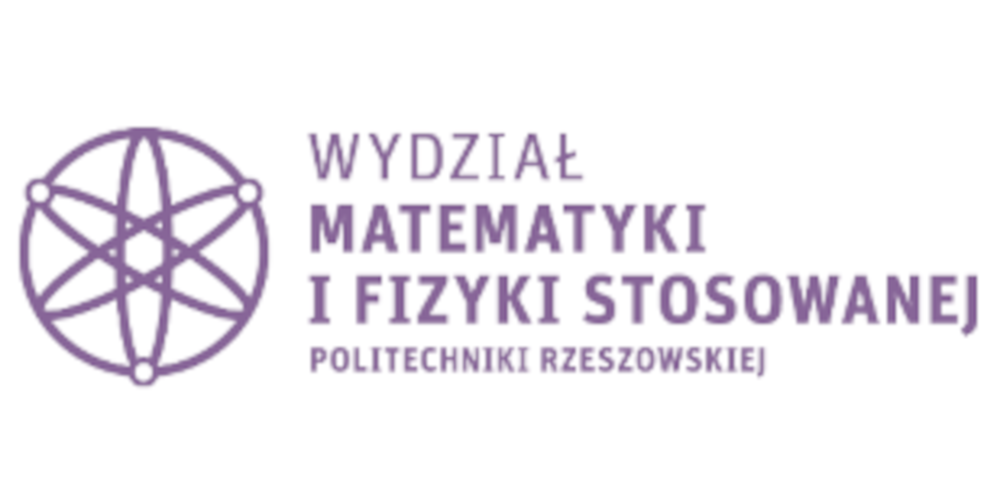

Evaluation of effectiveness of investments
Some basic information about the module
The aim of studying and bibliography
The main aim of study:
To familiarize the students with the notions of the financial and physical investment as well as with methods of evaluation of their effectiveness. Upon completion of this module the student should know the indicators and methods (static and dynamic) of evaluate of the effectiveness of investments.
To familiarize the students with the applications of R environment, CAS Maxima and spreadsheet in the evaluation of effectiveness of investments.
The general information about the module:
The module is implemented in the second semester in the form of lectures (30 hours) and laboratories (30 hours).
Bibliography required to complete the module
| 1 | K. Jajuga, T. Jajuga | Inwestycje: instrumenty finansowe, ryzyko finansowe, inżynieria finansowa | PWN, Warszawa. | 1999 |
| 2 | E. Nowak, E. Pielichaty, M. Poszwa | Rachunek opłacalności inwestowania | Polskie Wydawnictwo Ekonomiczne, Warszawa. | 1999 |
| 3 | M. Podgórska, J. Klimkowska | Matematyka finansowa | PWN, Warszawa. | 2005 |
| 4 | W. Rogowski | Rachunek efektywności inwestycji. Wyzwania teorii i potrzeby praktyki | Wolters Kluwer Polska SA, Warszawa. | 2013 |
| 5 | M. Sierpińska, T. Jachna | Ocena przedsiębiorstwa według standardów światowych | PWN, Warszawa. | 2006 |
| 6 | M. Sobczyk | Matematyka finansowa | Agencja Wydawnicza PLACET, Warszawa. | 2011 |
| 1 | P. Biecek | Przewodnik po pakiecie R | Oficyna Wydawnicza GiS, Wrocław. | 2017 |
| 2 | S. Klik | Arkusz kalkulacyjny EXCEL wer. 4.0: poradnik użytkownika | Wydawnictwo PLJ, Warszawa. | 1992 |
| 3 | C. T. Lachowicz | Matlab, Scilab, Maxima: opis i przykłady zastosowań | Oficyna Wydawnicza Politechniki Opolskiej, Opole. | 2005 |
| 4 | J. P. Lander | R dla każdego: zaawansowane analizy i grafika statystyczna | APN Promise, Warszawa. | 2018 |
| 5 | M. Podgórska, J. Klimkowska | Matematyka finansowa | PWN, Warszawa. | 2005 |
| 6 | M. Sierpińska, T. Jachna | Ocena przedsiębiorstwa według standardów światowych | PWN, Warszawa. | 2006 |
| 7 | M. Sobczyk | Matematyka finansowa | Agencja Wydawnicza PLACET, Warszawa. | 2011 |
Basic requirements in category knowledge/skills/social competences
Formal requirements:
Basic knowledge of financial mathematics.
Basic requirements in category knowledge:
A student has mathematical knowledge which allows him/her to understand the lectured material.
Basic requirements in category skills:
Ability to use fundamental mathematical tools in order to solve a task.
Basic requirements in category social competences:
A student is prepared to undertake substantiated mathematical operations in order to solve a task and has the ability to extend his/her knowledge independently.
Module outcomes
| MEK | The student who completed the module | Types of classes / teaching methods leading to achieving a given outcome of teaching | Methods of verifying every mentioned outcome of teaching | Relationships with KEK | Relationships with OEK |
|---|---|---|---|---|---|
| MEK01 | knows how to evaluate investments by using selected static methods for evaluation of effectiveness of investments | lecture, laboratory | project |
K-W02+ K-W04+ K-U02+ K-U16+ K-K01+ K-K02+ K-K03+ K-K04+ |
W01+ U03+ U05+ U07+ K01+ K02+ K03+ K04+ K05+ K06+ K07+ |
| MEK02 | knows how to evaluate investments by using selected dynamic methods for evaluation of effectiveness of investments | lecture, laboratory | project |
K-W02+ K-W04+ K-U02+ K-U16+ K-K01+ K-K02+ K-K03+ K-K04+ |
W01+ U03+ U05+ U07+ K01+ K02+ K03+ K04+ K05+ K06+ K07+ |
The syllabus of the module
| Sem. | TK | The content | realized in | MEK |
|---|---|---|---|---|
| 2 | TK01 | W01-W04 | MEK01 MEK02 | |
| 2 | TK02 | L01-L04 | ||
| 2 | TK03 | W05-W12, L05-L12 | MEK01 | |
| 2 | TK04 | W13-W30, L13-L30 | MEK02 |
The student's effort
| The type of classes | The work before classes | The participation in classes | The work after classes |
|---|---|---|---|
| Lecture (sem. 2) | The preparation for a test:
5.00 hours/sem. |
contact hours:
30.00 hours/sem. |
complementing/reading through notes:
5.00 hours/sem. |
| Laboratory (sem. 2) | The preparation for a Laboratory:
15.00 hours/sem. The preparation for a test: 15.00 hours/sem. |
contact hours:
30.00 hours/sem. |
|
| Advice (sem. 2) | The preparation for Advice:
3.00 hours/sem. |
The participation in Advice:
3.00 hours/sem. |
|
| Credit (sem. 2) |
The way of giving the component module grades and the final grade
| The type of classes | The way of giving the final grade |
|---|---|
| Lecture | A credit for the lecture is based on attendance at the lectures. |
| Laboratory | A credit for the laboratory is based on projects including material realized during lectures and laboratories. |
| The final grade |
Sample problems
Required during the exam/when receiving the credit
(-)
Realized during classes/laboratories/projects
(-)
Others
(-)
Can a student use any teaching aids during the exam/when receiving the credit : no